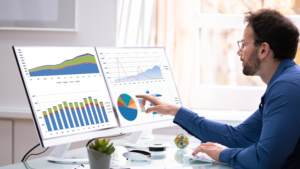Com o grande volume de dados cada vez mais tem se utilizado softwares com a finalidade de observar padrões dentro da área jurídica, por exemplo, observando os clientes propensos a cancelar o mandato ou os tipos de decisões dos tribunais. A essa análise é dado o nome de Data Mining ou Mineração de Dados.
Vamos conferir algumas dicas de aplicação dessa prática:
- Extrair conhecimento a partir de dados para resolver questões jurídicas. Ter o conhecimento da questão a ser resolvida dentro da sua empresa é algo fundamental, pois fornece uma estrutura para a análise dos dados. Por exemplo, na prática vê-se “soluções” analíticas que não são baseadas em análises cuidadosas. O conhecimento estruturado sobre a análise enfatiza esses aspectos, muitas vezes subvalorizados, de apoiar a tomada de decisão do gestor.
- A partir de um grande volume de dados ou do Big Data, a tecnologia da informação pode ser usada para encontrar os padrões, de acordo com as informações das ações, clientes ou de entidades de interesse. No caso, um cliente/empresa seria uma entidade de interesse, e cada cliente pode ser descrito
por um grande número de informações, como histórico de ações e muitos outros fatores.
Mas como conseguimos reunir essas informações e observar os padrões? A resposta desta pergunta é encontrar variáveis que se “relacionam” com o que se deseja analisar. E, alternativamente, aplicando a tecnologia da informação e a automatização de tarefas.
- Sobre Ajustar um conjunto de dados. As técnicas de mineração de dados são importantíssimas se souber utilizar e evitar sobreajuste. Nada mais é do que verificar a base de dados e filtrá-la, e para fazer esse tipo de tarefa contamos com softwares como o Legal Metrics.
- Formular soluções de mineração de dados e avaliar os resultados envolve pensar cuidadosamente sobre o contexto em que serão utilizados. Se o objetivo é a extração de conhecimento útil, como podemos formular essa utilidade?
E como dito anteriormente, a aplicação em si depende das questões jurídicas. Para o gerenciamento das informações deve-se ter em mente as 4 dicas acima, além de saber escolher o software de extração e previsão de dados jurídicos.
Assim, de modo mais geral, o padrão conduz a melhores decisões do que somente se basear em achismos. Os fatos e os resultados representados através de números são o ápice das vantagens que um escritório ou empresa almejam. Como uma empresa sairia com uma alternativa “padrão” inteligente? Já se fez essa pergunta?
Então se já se perguntou, sabe que os dados são uma fonte que pode ser explorada estrategicamente. Nesse sentido, vale a pena ficar de olho nas dicas e resolver as questões jurídicas através dos padrões!





